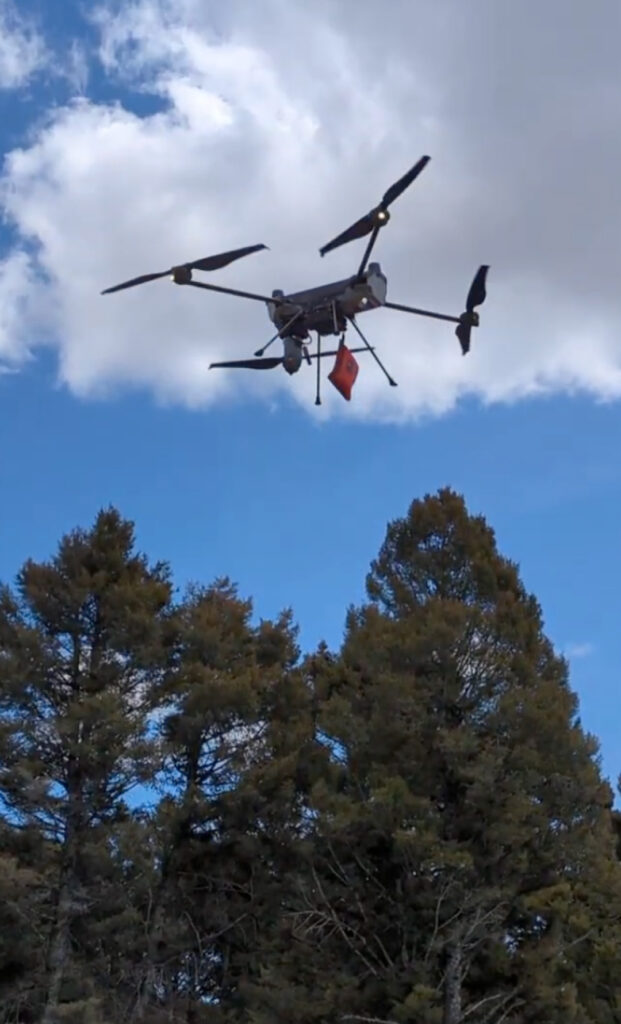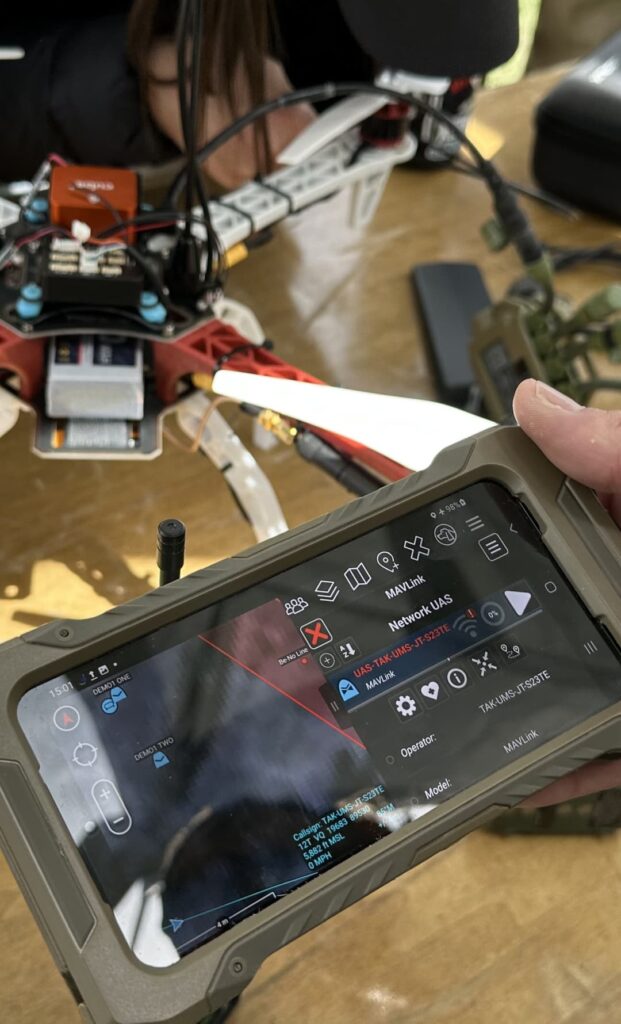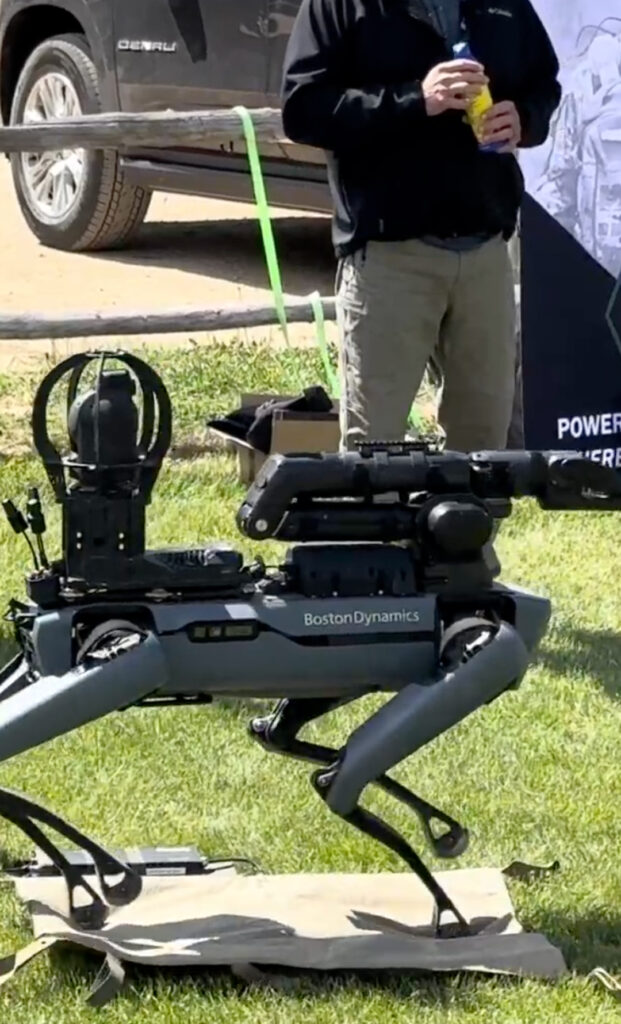
The Tough Stump Rodeo is a proving ground for tactical communications, challenging technology vendors to demonstrate their innovations in remote, disconnected environments that mirror real-world tactical operations. Somewear’s objective was to demonstrate our software-defined network and product ecosystem (Hotspot, Node, Grid, Beam) as a critical enabler for resilient, tactical edge communications. More specifically, we were seeking to showcase:
1. MANET Resilience / Bridging
2. UAV Flight Tests
3. Networked Wireless UxS Charging Stations
4. Sit(x) Server Integration
General Event Conditions
The event took place in the challenging terrain surrounding Virginia City, Montana – characterized by rugged mountainous landscapes and significant elevation changes. These features naturally create complex RF propagation environments, testing our systems in realistic line-of-sight and beyond-line-of-sight scenarios.
The presence of numerous other vendors actively deploying many of their own systems in the field significantly increased the ambient noise floor, adding a layer of complexity to operations. While the environment presented RF challenges from concurrent operations, there was no specific electronic warfare (EW) interference actively attempting to jam systems.

Demonstration 1: SAR Lane Scenario
Objective: To empower “lost hikers” in a rescue to communicate with the rescue team and push their PLI and messaging data into a Sit(x) server for shared situational awareness.
This scenario, orchestrated by event organizers, aimed to demonstrate Search and Rescue (SAR) operations involving personnel and dog teams locating lost/injured hikers. The objective was to pinpoint patient locations with sUAS drones, deliver medical and life-sustaining gear via drones, and then push all data back to the Operations Center.
Somewear significantly enhanced the SAR Lane’s resilience. We affixed a Node to the delivery drone, transforming it into an aerial mesh relay that pushed the drone’s PLI directly into the Sit(x) server for enhanced situational awareness. The drone successfully delivered a survival kit, including a Samsung EUD with ATAK and a Somewear Node, immediately connecting the “lost hikers” to the rescue team.
Communications proved highly resilient; messages flowed first over the local mesh, then reliably backhauled via satellite when needed. A “hiker” confirmed Somewear’s superior satellite performance, stating messages went out “a lot faster” than the Garmin inReach Mini that was also delivered. While the drone dropped its payload from 350 feet to maintain LOS, this highlighted Somewear’s potential: integrating our BLOS failover could have enabled closer, more precise delivery.
Throughout the demo, Somewear provided reliable tracking of both the delivery drone and the “lost hikers” post-delivery. All data—drone telemetry, hiker PLI, and messages—was seamlessly passed into the integrated Sit(x) Server, ensuring centralized information sharing and real-time situational awareness for the Operations Center.
Demonstration 2: MANET Resilience (with Silvus, TrellisWare, Doodle Labs)
Objective: To showcase Somewear’s BLOS narrowband backhaul extending MANET range and routing data (SmartRouting™) across multiple MANETs and also back to command.
During the MANET Resilience demonstration, the Somewear team successfully showcased our software-defined network as the underlying data fabric, seamlessly integrating three disparate MANET user groups. We effectively bridged networks from Silvus Technologies StreamCaster, Doodle Labs Mesh Rider, and TrellisWare Shadow 950 radios, demonstrating Somewear’s unique ability to bring these distinct communication modalities into a shared operational picture. The data types that are currently supported across the networks include PLI, messages, shapes/markers, and low-resolution images.
A standout aspect of this demo was the ease of integration. MANET users could rapidly join the common Somewear network simply by scanning a QR code with their ATAK devices, significantly reducing setup time and complexity in the field. Furthermore, we highlighted the critical capability for any Somewear Node to serve as a satellite backhaul, SmartBackhaul™. This ensures that even when a MANET link breaks, data continues to flow to other operators in the field as well as directly to Command & Control (C2), delivering maximized and uninterrupted situational awareness at the tactical edge.
Demonstration 3: UAV Flight Test
Objective: To demonstrate Somewear Node as a low SWaP-C, multi-network transport solution for extended UAS control and situational awareness.
During the UAV Flight demonstration, our team successfully integrated Somewear’s tactical network into a UAVs components and its core communication layer, MAVLink, using our integration agent, Beam, paired with a Somewear Node. Using the drone’s existing flight control software, ArduPilot, we enabled a pilot to launch and control the UAV within line-of-sight (LOS) for short-range reconnaissance missions.
The integration is UxS-agnostic, showcasing that our technology can extend the reach and resilience of virtually any unmanned system. Our software is designed to be standards-compliant and adheres to Modular Open Systems Approach (MOSA) principles, which allows for integration with battlefield tools such as Net Warrior Mission Planner.
Beyond the initial LOS control, Somewear’s built-in BLOS capability provides network assurance to pass critical telemetry data such as PLI, altitude, and various sensor readings. The BLOS satellite link also empowers a pilot to control a drone far beyond its traditional reach, sending new mission profiles or commands to the UAV once line-of-sight range has been exceeded. This expanded reach ensures the UAV’s position can be reliably relayed to ground forces as well as Command & Control (C2), providing continuous situational awareness and crucial support for airspace deconfliction, among other critical applications.


Demonstration 4: Networking UAV Wireless Charging Stations (with Quaze Technologies)
Objective: To showcase remote management and telemetry for Quaze Technologies’ wireless charging stations via Somewear’s resilient network.
This demonstration provided a glimpse into the future of autonomous operations, showcasing Quaze Technologies’ wireless charging mats integrated with both a Boston Dynamics’ robot dog and Skydio drones. In a UAS assault scenario, the robot dog was tasked with carrying a charging mat and a drone, deploying them to a “remote, austere” location. Once deployed, the critical challenge was maintaining connectivity for these unattended charging stations. This is where Somewear’s software-defined network came into play.
Through the integration of our Beam agent and a Somewear Node—specifically chosen for its low Size, Weight, Power, and Cost (SWaP-C), making it ideal for unattended forward-deployed assets—these remote charging stations remained tied into the network. Leveraging this resilient connection, the Quaze team was successfully able to send commands to the mats, which in turn provided real-time, specific data points such as charging mat health, station occupancy, the unmanned asset’s ID, its current battery life, and more. This demonstration highlighted Somewear’s ability to extend autonomous operational reach and data assurance to the far edge, enabling truly remote and unassisted deployments.
Demonstration 5: Sit(x) Server Integration
Objective: To showcase how Somewear’s software-defined network aggregates and routes diverse data from multiple tactical sources into a centralized Sit(x) server for continuous situational awareness.
Building upon the individual successes of the MANET Resilience, UAV Flight Test, and Networking UAV Wireless Charging Stations demonstrations, we highlighted a critical overarching capability: Somewear’s integration with Sit(x) servers. Our software-defined network serves as the intelligent backbone, automatically handling the complex task of routing all types of critical data (SmartRouting™) – from dismounted operators, unmanned aerial vehicles, and autonomous charging stations – into a centralized Sit(x) instance. This capability provides unified, real-time information sharing and maximizes situational awareness from the tactical edge to strategic command.
If you are interested in learning more about how Somewear can support your operations, please contact sales@somewearlabs.com.
